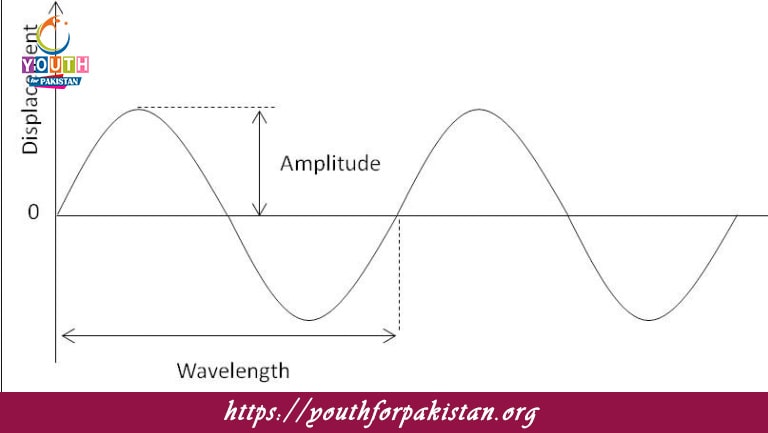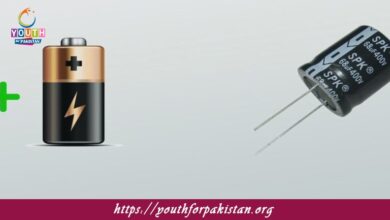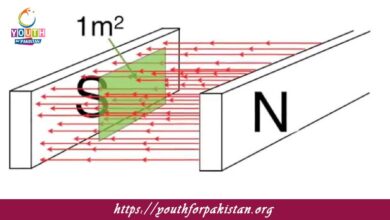Progressive Waves MDCAT MCQs with Answers

Welcome to the Progressive Waves MDCAT MCQs with Answers. In this post, we have shared Progressive Waves Multiple Choice Questions and Answers for PMC MDCAT 2024. Each question in MDCAT Physics offers a chance to enhance your knowledge regarding Progressive Waves MCQs in this MDCAT Online Test.
Progressive Waves MDCAT MCQs Test Preparations
A progressive wave:
a) Stays in one place
b) Moves through space
c) Changes amplitude
d) Reflects off surfaces
The equation of a progressive wave traveling in the positive x-direction is given by:
a) y = A sin(kx – ωt)
b) y = A sin(kx + ωt)
c) y = A cos(kx – ωt)
d) y = A cos(kx + ωt)
The quantity that describes the distance between two successive points in phase in a progressive wave is called:
a) Frequency
b) Wavelength
c) Amplitude
d) Speed
In a progressive wave, if the frequency is doubled, what happens to the wavelength?
a) It doubles
b) It halves
c) It remains the same
d) It quadruples
The speed of a progressive wave is given by:
a) v = λ * f
b) v = λ / f
c) v = f / λ
d) v = λ + f
If a progressive wave has an amplitude of 2 m and a frequency of 5 Hz, its wave speed is 20 m/s. What is the wavelength?
a) 2 m
b) 4 m
c) 10 m
d) 20 m
The phase difference between two points in a progressive wave is 180 degrees. What is the relationship between the two points?
a) They are in phase
b) They are out of phase
c) They are at the same amplitude
d) They are at different frequencies
For a wave described by y = A sin(kx – ωt), what does ‘k’ represent?
a) Wavelength
b) Frequency
c) Wave number
d) Amplitude
The speed of a progressive wave is determined by:
a) Frequency and amplitude
b) Wavelength and frequency
c) Amplitude and wave number
d) Frequency and phase
In a progressive wave, if the wavelength is halved and the frequency remains constant, what happens to the speed?
a) It doubles
b) It remains the same
c) It halves
d) It quadruples
The phase of a wave describes:
a) The speed of the wave
b) The direction of propagation
c) The displacement at a given point in time
d) The distance traveled by the wave
A progressive wave traveling along a string has a displacement equation given by y = A cos(kx – ωt). What does ‘ω’ represent?
a) Wavelength
b) Wave speed
c) Angular frequency
d) Phase constant
In a progressive wave, if the phase difference between two points is zero, the points are:
a) Out of phase
b) In phase
c) At different frequencies
d) At different amplitudes
For a sinusoidal progressive wave, the displacement y at a point x and time t is given by y = A sin(kx – ωt). What does ‘A’ represent?
a) Wavelength
b) Speed
c) Amplitude
d) Frequency
The wave function y = A sin(kx – ωt) describes a:
a) Longitudinal wave
b) Transverse wave
c) Surface wave
d) Standing wave
If the amplitude of a progressive wave is increased, which of the following also increases?
a) Wavelength
b) Frequency
c) Speed
d) Intensity
What happens to the energy carried by a wave if the amplitude is doubled?
a) It remains the same
b) It doubles
c) It quadruples
d) It halves
The distance between two successive crests or troughs of a wave is called:
a) Amplitude
b) Frequency
c) Wavelength
d) Phase
A wave traveling in the positive x-direction with an amplitude of 1 m and wavelength of 2 m has a frequency of 5 Hz. What is the speed of the wave?
a) 5 m/s
b) 10 m/s
c) 2.5 m/s
d) 1 m/s
The phase velocity of a wave is:
a) The speed at which the energy travels
b) The speed at which the phase of the wave travels
c) The speed at which the amplitude changes
d) The speed at which the wave front moves
For a wave traveling along a string with a fixed end, the points that do not move are called:
a) Nodes
b) Antinodes
c) Crests
d) Troughs
The time taken for a complete wave to pass a given point is called:
a) Frequency
b) Wavelength
c) Period
d) Amplitude
The distance traveled by a wave in one period is:
a) Wavelength
b) Amplitude
c) Frequency
d) Speed
A progressive wave is characterized by:
a) Standing still
b) Moving through space with a constant shape
c) Reflecting off surfaces
d) Changing direction randomly
The displacement of a point on a progressive wave as a function of time is given by:
a) y = A cos(ωt)
b) y = A sin(ωt)
c) y = A cos(kx – ωt)
d) y = A sin(kx + ωt)
The speed of a wave on a string is determined by:
a) The tension in the string and its mass per unit length
b) The frequency of the wave and the amplitude
c) The wavelength and the amplitude
d) The frequency and the phase
The wave described by y = A sin(kx – ωt) has a wavelength λ, what is the relationship between ‘k’ and λ?
a) k = 2π / λ
b) k = λ / 2π
c) k = λ * 2π
d) k = 2π * λ
The term ‘frequency’ refers to:
a) The number of oscillations per unit time
b) The distance between two crests
c) The maximum displacement from equilibrium
d) The speed of the wave
If the frequency of a wave is increased while keeping the wavelength constant, what happens to the wave speed?
a) It decreases
b) It remains the same
c) It increases
d) It becomes zero
For a wave traveling in a medium, the relationship between speed (v), frequency (f), and wavelength (λ) is:
a) v = f * λ
b) v = λ / f
c) v = f / λ
d) v = λ + f
The rate at which energy is transported by a progressive wave is called:
a) Power
b) Intensity
c) Amplitude
d) Frequency
The distance traveled by the wave in one second is:
a) Amplitude
b) Wavelength
c) Period
d) Speed
If a wave travels through a medium and the amplitude is halved, what happens to the energy?
a) It doubles
b) It remains the same
c) It halves
d) It quarters
In a progressive wave, the points where the displacement is maximum are called:
a) Nodes
b) Antinodes
c) Troughs
d) Crests
The phenomenon where two waves combine to form a resultant wave is called:
a) Reflection
b) Diffraction
c) Interference
d) Refraction
For a progressive wave, the phase difference between two points that are separated by one wavelength is:
a) 0 degrees
b) 90 degrees
c) 180 degrees
d) 360 degrees
The phase of a progressive wave changes by:
a) λ / 2π
b) 2π / λ
c) ωt
d) kx
In a progressive wave equation, if the phase constant is zero, what does this indicate?
a) The wave starts from maximum amplitude
b) The wave starts from minimum amplitude
c) The wave starts from equilibrium
d) The wave starts from a node
The relationship between the angular frequency (ω) and the frequency (f) is:
a) ω = 2πf
b) ω = f / 2π
c) ω = 2π / f
d) ω = f * 2π
In a progressive wave traveling through a medium, the points with zero displacement are called:
a) Antinodes
b) Nodes
c) Crests
d) Troughs
If you are interested to enhance your knowledge regarding Physics, Chemistry, Computer, and Biology please click on the link of each category, you will be redirected to dedicated website for each category.





